Who's buried in Phoenix cemeteries?
- Oops!Something went wrong.Please try again later.
From George W.P. Hunt to the Lost Dutchman, Phoenix is the final resting place of many notable figures both in Arizona history and the nation.
The cemeteries and memorials of Phoenix tell the story of Arizona's growth from a small pioneer town to a bustling metropolis.
Who's buried across the Valley: Scottsdale | Chandler | Tempe | Mesa | Surprise | Glendale
Jeb John Rosebrook
June 11, 1935 - Aug. 31, 2018
Jeb John Rosebrook was a novelist and screenwriter. Some of his most remarkable works were the 1979 American science fiction film “The Black Hole,” produced by Walt Disney Productions, and “Junior Bonner,” the rodeo classic film. He was a longtime Arizona resident and now rests in All Saints Episcopal Church Cemetery.
In memoriam: Remembering celebrities who died in 2018
Rose P. Mofford
June 10, 1922 - Sept. 16, 2016
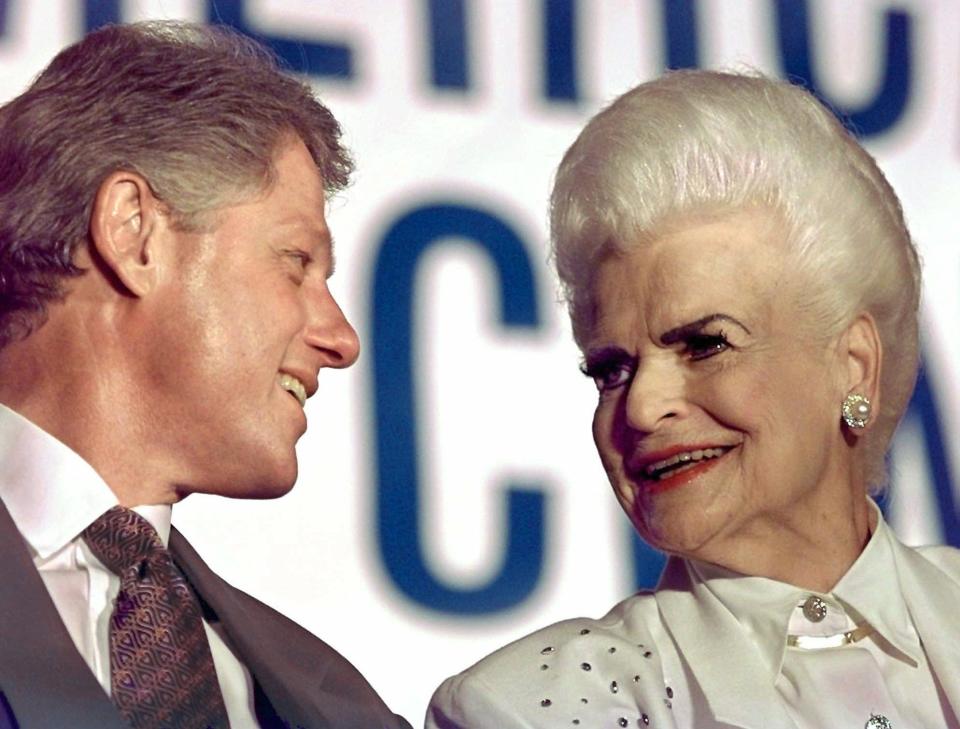
The final resting place of former Gov. Rose Mofford is at St. Francis Cemetery in Phoenix. It's not in her hometown of Globe, but she is within steps of her parents, John and Frances Perica, and a sister.
Rose Mofford's grave marker: One fit for first female governor of Arizona, unveiled in ceremony
Our View: Rose Mofford was an Arizona original
Lou Grubb
1922 - Jan. 24, 2012
Lou Grubb founded Grubb Automotive, one of the largest dealerships in Phoenix. He quickly became a household name in the 1970s and '80s for his "Take Five" radio and TV commercials that showcased his soft and honest nature. The New York native founded Grubb Automotive in 1972 and grew the company into one of the largest automotive dealerships in metro Phoenix featuring automobile brands such as Buick, Chevrolet, Ford, Nissan, Toyota and others. He sold his chain in 1997 to the conglomerate AutoNation during a nationwide dealership buying spree. He is at Hansen Desert Hills Mortuary and Memorial Park.
Honoring the founder of Grubb Automotive: Papago Golf Course opens Lou's Bar and Grill inside the Lou Grubb Clubhouse
Bil and Thelma Keane
Oct. 5, 1922 - Nov. 8, 2011 | March 15, 1926 - May 23, 2008
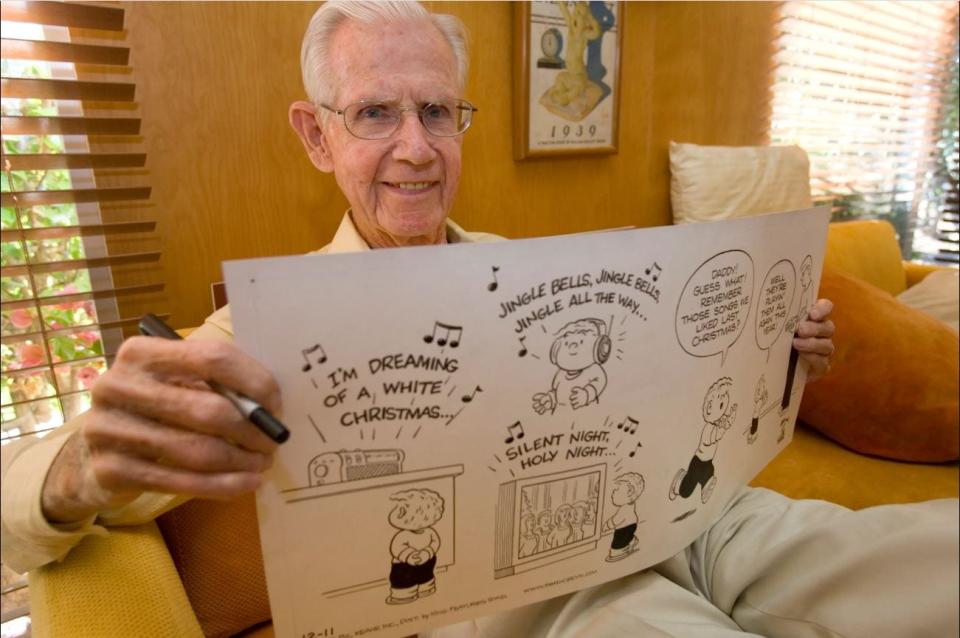
Bil Keane is known for his newspaper comic "Family Circus" starring Billy, Dolly, Jeffy and P.J., sometimes set in Scottsdale. It began appearing in newspapers on Feb. 29, 1960. He and his wife, Thelma, are buried at Holy Redeemer Cemetery in north Phoenix.
“The Little Mermaid”: The original Ariel was designed by Glen Keane, the son of Arizona’s Bil Keane
Kerry Martin
Aug. 13, 1974 - May 25, 2009
Kerry Martin was the wife of former Arizona state Treasurer, Dean Martin. Kerry was a prominent figure in Phoenix, raising money for several programs that benefited needy children, water safety and other causes. Kerry died during childbirth. Her son, Austin Michael, died days later. The Martin Family Charitable Foundation was founded in Kerry and Austin's names and promotes the education and well-being of children, mothers and families. She is at Hansen Desert Hills Mortuary and Memorial Park.
Rodney Beck
Aug. 3, 1968 - June 23, 2007
Rodney Beck was a Major League Baseball pitcher for 13 seasons, playing for the Giants, Cubs, Red Sox and Padres between 1991-2004. He played for the National League All-Star Team three times. He is at Hansen Desert Hills Mortuary and Memorial Park.
Caleb Paul Christopher
Jan. 13, 1982 - June 3, 2007
Caleb Paul Christopher was an Army soldier killed in Iraq on June 3, 2007. The National Memorial Cemetery of Arizona in Phoenix has thousands of veterans honored there.
Anthony David Ewing
Sept. 18, 1984 - May 28, 2007
Anthony David Ewing was an Army soldier killed in Iraq on May 28, 2007.
Arizona war dead: Nearly 3,000 have died in service to their country
Al Casey
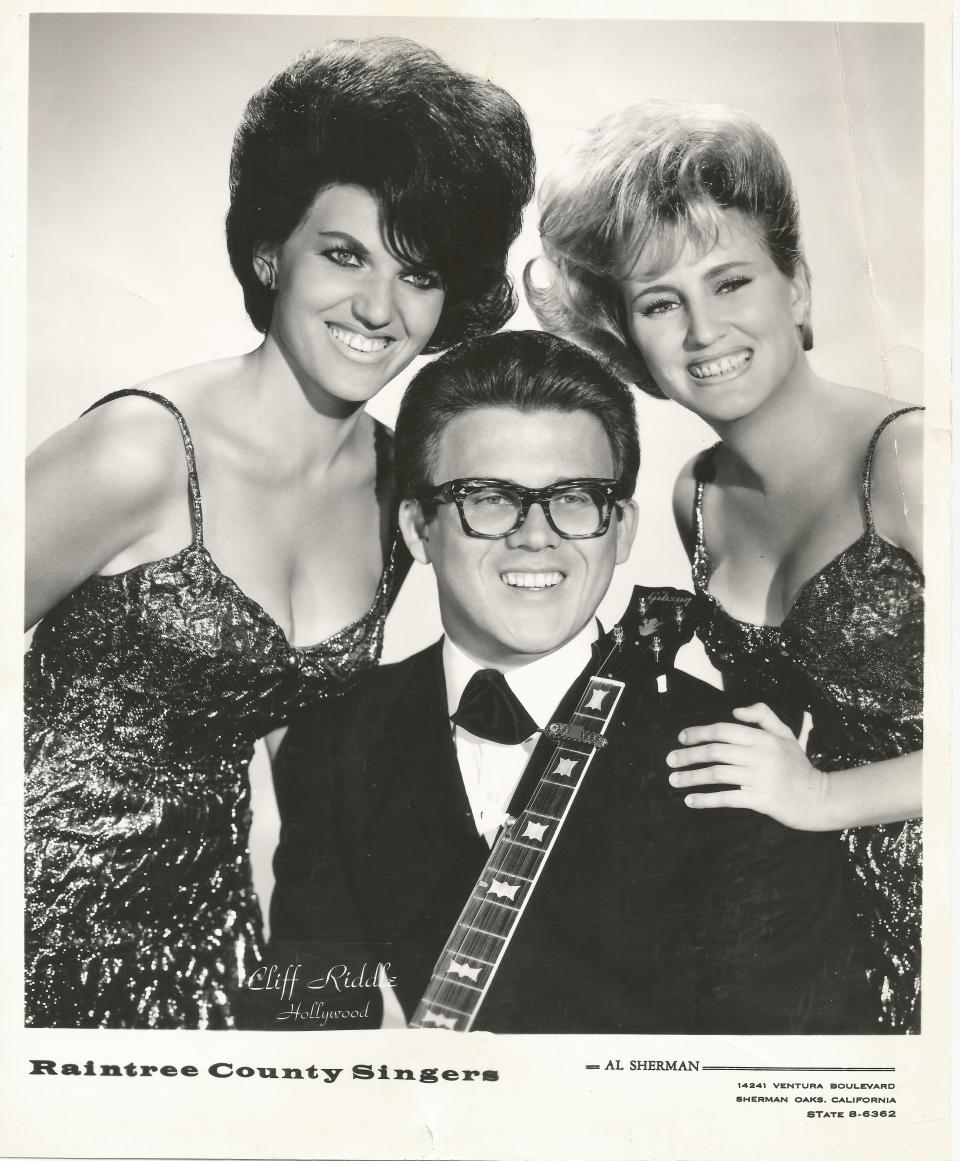
Oct. 26, 1936 – Sept. 17, 2006
Al Casey was an American guitarist. Casey became a full-fledged member of the "Sunset Riders" during his teen years, then "Duane Eddy and the Rebels," and of his own ensemble "Al Casey Combo".
He is now buried at the Phoenix Memorial Park and Mortuary.
A musical love story: She called herself rock's first side chick. Why this Arizona guitarist was so much more
Karsten Solheim
Sept. 15, 1911 – Feb. 16, 2000
A game-changer for the sport of golf, Karsten Solheim designed and manufactured the Ping Anser putter. These putters have been used to win more than 1,800 professional golf tournaments. Solheim is at Hansen Desert Hills Mortuary and Memorial Park.
Louise Solheim: Wife of late PING founder, dies at 99 in Phoenix
Ernest William McFarland
Oct. 9, 1894 - June 8, 1984
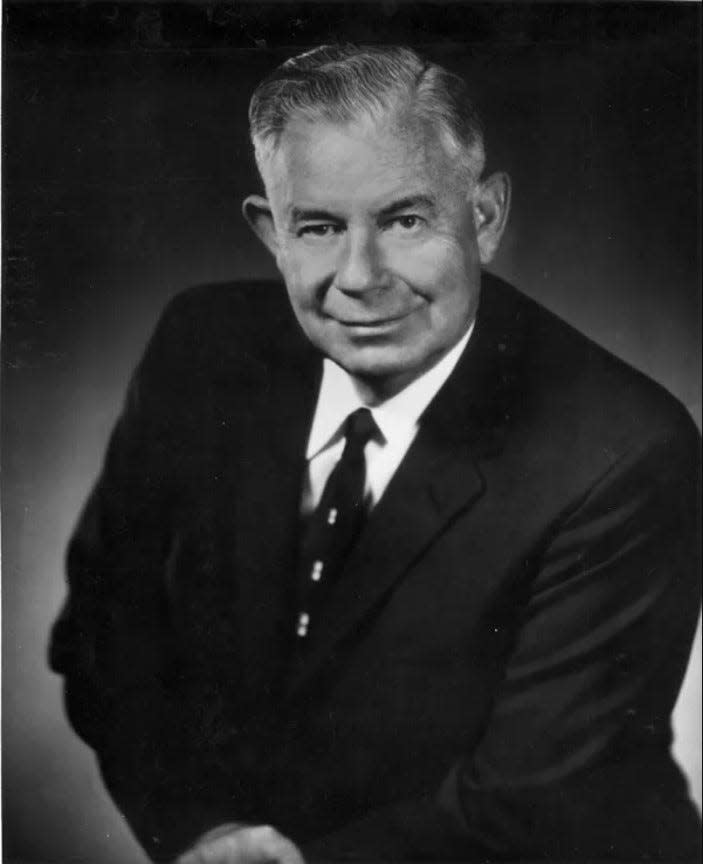
Ernest William McFarland, born in Oklahoma, arrived in Arizona in 1919. He served as Senate majority leader under President Truman in 1951 and 1952. As a member of the Interior and Insular Affairs Committee, McFarland proposed legislation to assist Native American tribes in Arizona and other Southwestern states. He also introduced or co-sponsored 43 bills to aid veterans and members of the armed forces. In 1954, McFarland defeated Pyle in the race for governor and presided over Arizona's post-war boom, eventually winning reelection. As governor, McFarland increased aid for higher education, started initiatives to improve conditions and treatment for the physically disabled and made efforts toward highway infrastructure and construction. McFarland died on June 8, 1984, and is buried in Greenwood Memorial Park in Phoenix.
Leading Arizona: A look at the state's governors
Deana Lynne Bowdoin

1956 - Jan. 7, 1978
Deana Lynne Bowdoin, was a senior at Arizona State University when she was killed in her apartment in the early morning hours of Jan. 7, 1978.
Her murderer was unknown for years until DNA evidence linked Clarence Wayne Dixon to the crime. Dixon was convicted three decades after her death. On May 11, 2022, he became the first man put to death by Arizona since the botched execution of Joseph Wood in 2014.
Deana Bowdoin's killer was a mystery. Technology ID’d Clarence Dixon, a man who had been nearby all along
Oscar Austin
Jan. 15, 1948 - Feb. 23, 1969
Oscar Austin was a Phoenix man who served in the Marines during the Vietnam War. He was awarded the Medal of Honor for heroism in sacrificing his life to save the life of a fellow Marine. His family was told that during a 3 a.m. battle, Austin was mortally wounded when he leaped out of a foxhole and jumped between another Marine and a hand grenade. Though the grenade exploded and injured Austin, he got back on his feet and blocked rifle fire to protect the Marine. In 1998, the U.S. Navy named a missile-destroyer ship after him, the USS Oscar Austin. He is buried at Greenwood Memory Lawn Cemetery and Mortuary.
Part of history: How Phoenix Elementary School District has grown over the last 150 years
Gustave 'Gus' Greenbaum
Feb. 26, 1893 - Dec. 2, 1958
Gus Greenbaum was a businessman and a Chicago mobster with ties to Al Capone, Meyer Lansky and Bugsy Siegel. He came to Phoenix to run what was known as the Trans-America racing wire, which used telegraph lines to transmit betting information such as track conditions, jockeys and other elements to bookies and illegal gambling parlors around the country. He is buried at the Beth Israel Cemetery in Phoenix.
Previous references: The evolution of racetracks, mob influence and Kemper Marley
George W.P. Hunt
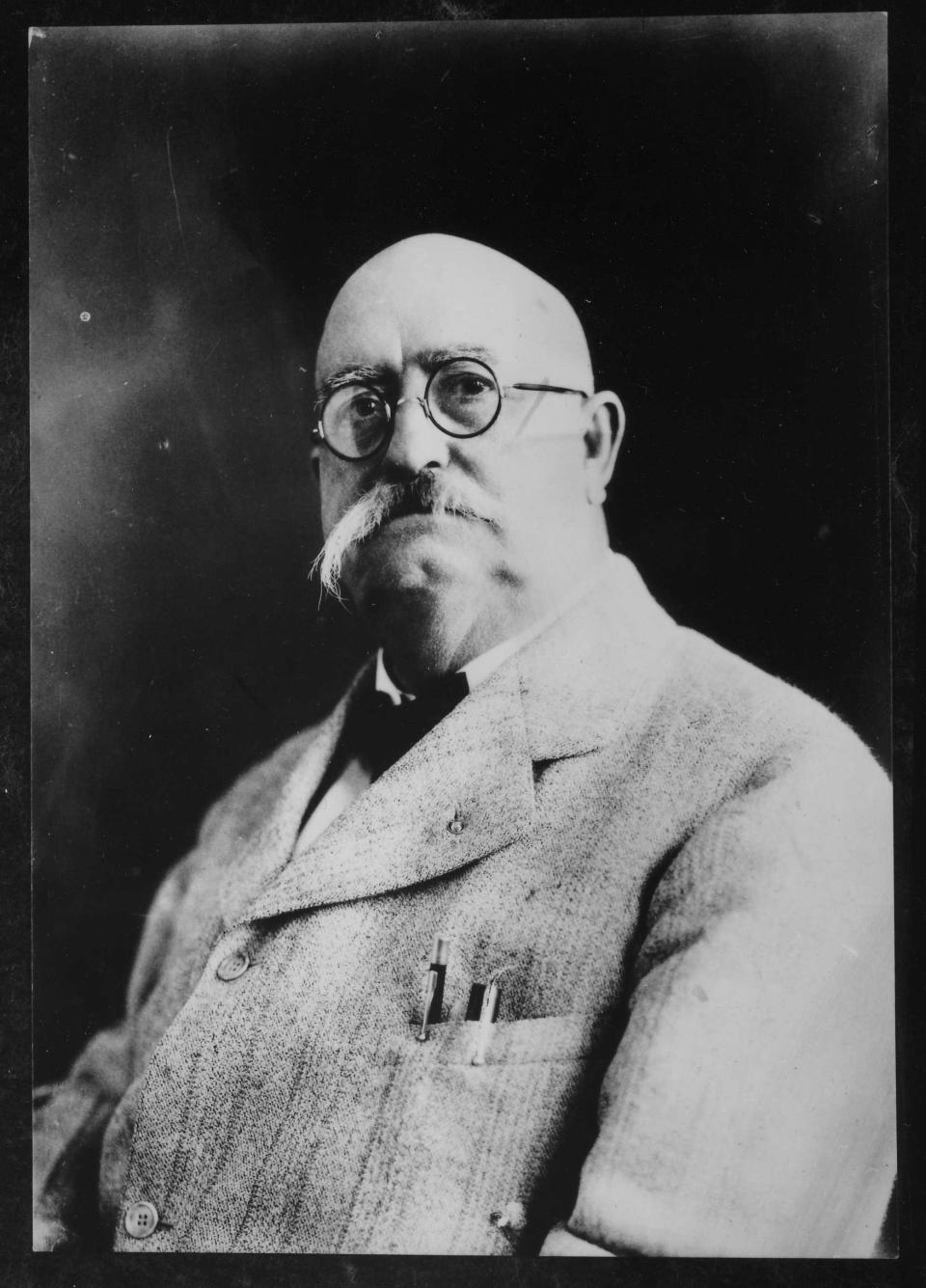
Nov. 1, 1859 - Dec. 24, 1934
George W.P. Hunt, the first governor of Arizona, is buried in a tomb, along with his wife, her parents and sister, on a butte in Papago Park, overlooking the Phoenix Zoo. The tomb, covered with white tiles, was originally erected in 1932 as the burial place for Hunt's wife in what was a state park. The city took it over in the 1950s.
George W.P. Hunt: Arizona's first governor served 7 terms. Here's why
Previous features: Why is former Arizona Gov. George W.P. Hunt's tomb so special?
Trinidad Escalante Swilling Shumaker
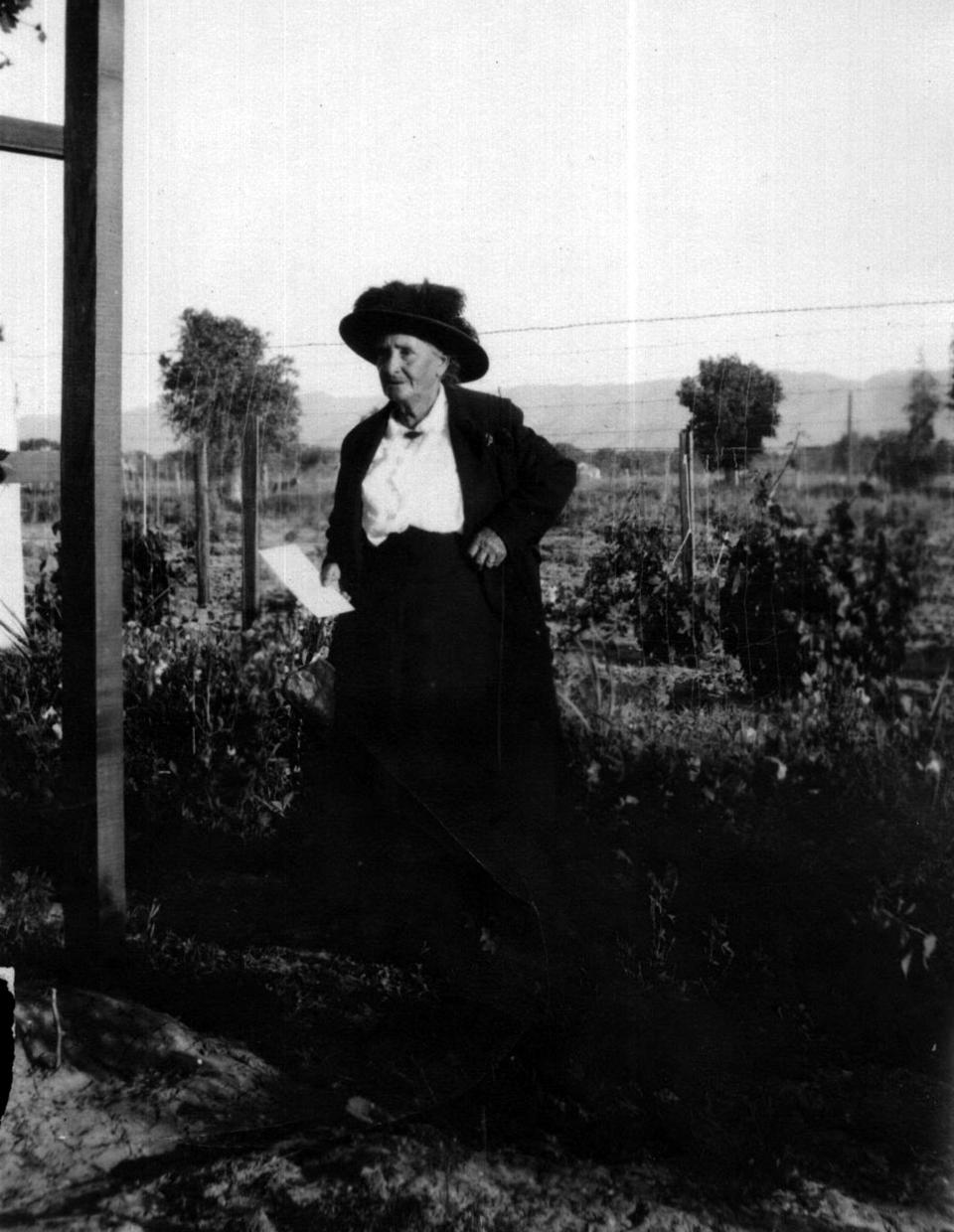
April 15, 1849 - Dec. 27, 1925
Trinidad Escalante Swilling Shumaker was the second wife of Jack Swilling, the prominent pioneer credited with naming Phoenix.
Find the marker, on Grave 8 in Section 31, north of a water faucet at St. Francis Cemetery. Phoenix's first Catholic Cemetery opened on Oct. 12, 1897.
Trinidad Escalante Swilling: Latina 'mother of Phoenix' who helped shape the Valley we know today
Isiah Mays
Feb. 16, 1858 - May 2, 1925
Isaiah Mays was a Buffalo Soldier who died at the Arizona State Hospital but was buried in an unmarked grave in the cemetery behind the hospital. Mays was born in Carters Bridge, Virginia, in 1858, earned the Medal of Honor on Feb. 19, 1890, for fighting to save an Army payroll from bandits, and died in the hospital in 1925. His grave received a Medal of Honor headstone in 2001, and in 2009, his remains were transferred to Arlington National Cemetery.
Ambrose Skinner
1826 - May 1, 1922
Born into a North Carolina town bound by slavery, Ambrose Skinner enlisted in an all-Black infantry in 1863 and fought in the Civil War. Skinner was then stationed at Fort Quitman, Texas, until 1874. There would be no government record of Skinner for the next 15 years until he filed for a military pension. He was denied. Skinner then married, and the couple had four children in Phoenix. He was eventually granted a military pension. Skinner died in 1922 and was buried in Phoenix at Pioneer and Military Memorial Park without a marker. But about 90 years later, the Sons of Union Veterans of the Civil War secured a military headstone from the U.S. Department of Veterans Affairs.
John and Perlina Osborn
1816 - 1900 | 1821 - 1912
John Osborn and his wife, Perlina, were one of the early pioneers in the Arizona territory. His family was one of the earliest settlers of Prescott in 1854. They are at Pioneer and Military Memorial Park.
Czar James Dyer

Feb. 2, 1846 - March 28, 1903
Czar James Dyer served briefly as the mayor of Phoenix in 1899. He was a mapmaker, and his "Bird's eye view of Phoenix, Maricopa Co., Arizona" map, drawn in 1885, is contained in the Library of Congress collection.
Dyer is the only mayor whose picture is missing at Phoenix City Hall, and his gravestone at Pioneer and Military Memorial Park incorrectly lists an "A" for his middle name.
Camera shy: Phoenix had no photos of this past city mayor — until now
Lindley Orme

Dec. 19, 1848 - Sep. 24, 1900
Lindley Orme, one of the earliest residents of the Valley, moved to Arizona in 1870 and served four terms as a Maricopa County sheriff, with 10 years in between his second and third terms.
He was elected Maricopa County sheriff in 1880, 1882 and 1891. He is now buried at Pioneer and Military Memorial Park.
Top lawmen of Maricopa County: A history of the county's sheriffs
Clarence L. Proctor
1865 - 1900
Clarence L. Proctor was a Buffalo Soldier, a sergeant in Troop L of the 10th U.S. Cavalry during the Spanish-American War who hanged himself. He now lies in Porter Cemetery in Maricopa County.
Millard Lee Raymond
1875 - 1899
Millard Lee Raymond was a Rough Rider during the Spanish-American War. His original tombstone was incorrectly marked as Raymond Miller. He now lies in Porter Cemetery in Maricopa County.
Benjamin Joseph Franklin
March 1839 - May 19, 1898
Benjamin Joseph Franklin was born in Kentucky in 1839. Appointed Arizona's 12th territorial governor in 1896 by President Grover Cleveland, he was replaced a year later when William McKinley became president. Franklin started a law office in Phoenix after serving but died of heart trouble in 1898. He now lies in Rosedale Cemetery in Phoenix.
Scott Helm
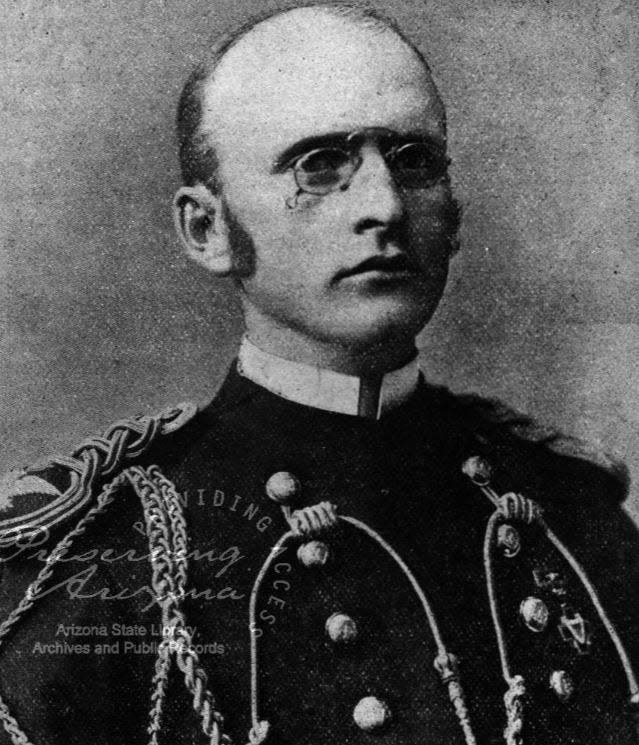
Oct. 8, 1897
Scott Helm, a prominent Phoenix physician who stood trial on abortion charges in 1891, was the state surgeon general who died of head trauma after his horse reared and smashed his head into a pole.
He is buried at Pioneer and Military Memorial Park.
Part of history: A century of prosecutions, deaths before Roe sheds light
Letitia B. Rice
Mar. 25, 1876 - May 19, 1893
Letitia B. Rice, also known as Tessie Murray and Mrs. Wright, was a prostitute who burned to death in 1893 in "The Powers," a saloon and lodging house thought to be a house of prostitution. She is at Pioneer and Military Memorial Park.
Rosson family's children
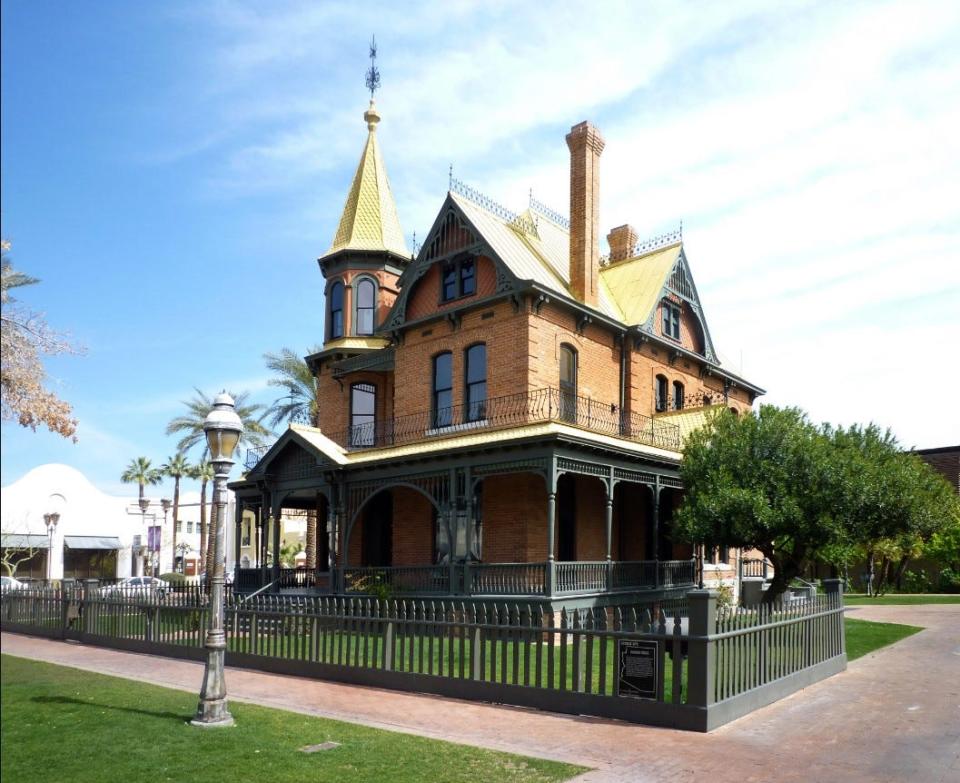
Roland Lloyd: 1 month and 7 days, Feb. 25, 1883
Infant daughter: Jan. 7, 1896
Children of the family who owned the Rosson House in Heritage Square in downtown Phoenix are buried at the Pioneer and Military Memorial Park.
Historical building: This victorian mansion has always been at Phoenix’s political forefront
Rosson House: Real haunted places in metro Phoenix
Bryan Philip Darell Duppa
Oct. 9, 1832 - Jan. 29, 1892
Bryan Philip Darell Duppa is buried at the Pioneer Cemetery. He is credited with naming both Phoenix and Tempe. Duppa was a prospector, farmer, miner and laborer. He ran a stage station on the Agua Fria River between Phoenix and Wickenburg, near the site of Sun City. "Lord Duppa," as he was called, was originally buried in the I.O.O.F Cemetery and then moved to Greenwood Memory Lawn Cemetery in 1921. Duppa was returned to Pioneer and Military Memorial Park on Nov. 16, 1991, to the Masons Cemetery.
Duppa's mark: How Phoenix-area cities got their names
Phoenix turned 140: Here’s what some local leaders are most proud of
Abraham Peeples
1823 - Jan. 28, 1892
Abraham Peeples was a prospector, rancher and settler who later came to be known as Peeples Valley. His gravestone is part of the Memorial Headstone Program, which gives people the option to donate money or sponsor a gravestone for those who do not have marked graves. He is at Pioneer and Military Memorial Park.
Jacob Waltz
1808 - Oct. 25, 1891
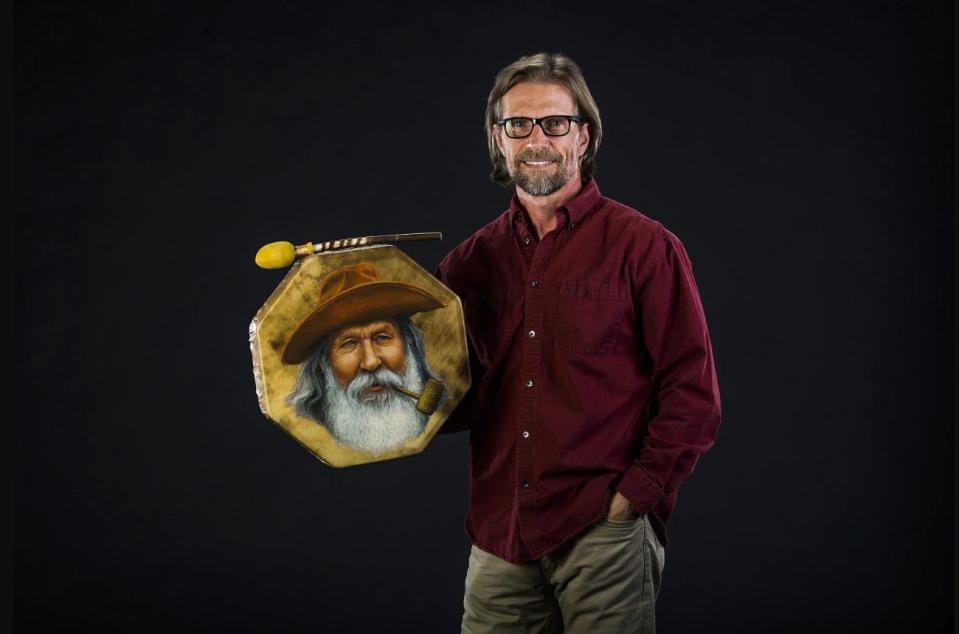
Jacob Waltz, also known as the "Lost Dutchman," was born in Germany in 1808 and came to the United States in 1846. He worked as a miner, and in 1868 he settled 160 acres near the Salt River in what is now the East Valley. He died there in the fall of 1891, just after — so the story goes — telling his caretakers, Julia Thomas and Rhinehart Petrasch, about a fabulously rich mine in the nearby Superstition Mountains. People have been searching for it ever since. Waltz now lies in Pioneer & Military Memorial Park in Phoenix.
Inglorious Arizona: Did the Lost Dutchman gold mine really exist?
Lost Dutchman State Park: Gateway to the Superstition Mountains
King S. Woolsey
1832 - June 30, 1879
King S. Woolsey, a rancher, scout and pioneer who in 1864 engineered the slaughter of nearly 30 Apaches accused of stealing livestock. He held numerous government positions in the territorial Legislature. He opened the first skating rink in Phoenix at Woolsey and Wentworth Hall in 1878. He is at Pioneer and Military Memorial Park.
Woosley's influence: How did the Salt River get its name?
Memorials
A memorial on the Senate Lawn on the state Capitol grounds is dedicated to children who have been murder victims. The monument contains 100 cement "stepping stones," which bare the names and dates that Arizonan children lost their lives to violence.
At the Pioneer and Military Memorial Park, there is a memorial to soldiers who fought in numerous American wars before 1914. There is also the river-rock vault, built in 1878. In 1989 it was opened and repaired. A part of the river rock can still be seen on one side of the vault. Buried in the vault are E. Loring, George V. Loring, Henrietta Towles Loring, Margaret Ann Roby Loring, Samuel V. Loring and two infants.
At the Arizona State Hospital cemetery, you can find grave marker No. 1647. All but five people of the more than 2,400 buried at the cemetery were patients at the hospital, many of whom died in the late 1800s and early 1900s. A fire in 1935 destroyed the cemetery records.
Unique grave markers
Cemeteries in Phoenix feature different types of unique markers. Many of the grave headstones in the more than 100-year-old cemetery were made out of wood instead of stone.
The Pioneer and Military Memorial Park has an ornate headstone that marks the final resting place of a child who died in 1893.
This article originally appeared on Arizona Republic: Who's buried in Phoenix cemeteries?

